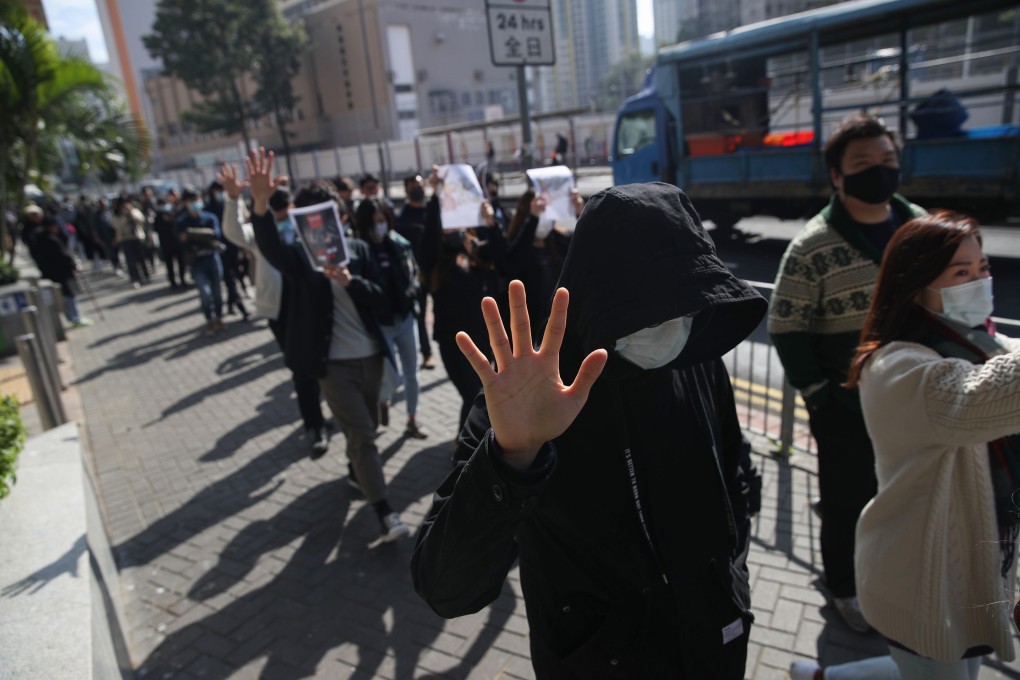Hong Kong’s lunchtime protests resurgent as hundreds vent anti-government anger across the city
- Activists emerge in Causeway Bay, Kwai Chung, San Po Kong and other parts of city on Friday
- Numbers are up ahead of a major protest on Sunday after dwindling attendances in recent days

Hundreds of Hongkongers joined lunchtime protests across the city on Friday, as the movement escalated its daytime show of defiance ahead of a mass rally on Sunday.
There were dozens to more than 100 protesters at each location, which included Causeway Bay, San Po Kong, Kwai Chung, Kwun Tong and Cheung Sha Wan.
Activists called on the government to launch an independent probe into alleged police brutality and relaunch the city’s political reform, among other demands.
In San Po Kong, about 100 people, including office workers, students and retirees, marched along Tai Yau Street, chanting “Disband the police force! Hongkongers, take revenge!”
They took to the streets in colder temperatures in what many saw as a warm-up for Sunday’s mass march between Causeway Bay and Central, which was approved by police on Thursday.
A music instructor, surnamed Fung and in his 20s, said he would continue to protest regardless of the weather.